Approach to the anterolateral tibial surface
1. Introduction
The anterolateral approach is performed through an incision slightly lateral to the tibial crest. The anterior compartment muscles are reflected from the lateral tibial surface.
This approach is not commonly used but may be necessary in open fractures if the wound overlies the site for a medial plate, and when the medial soft tissues are compromised.
The disadvantage of this approach is that the exposure is more difficult and requires mobilization of the muscles of the anterior compartment, which compromises the tibial blood supply.
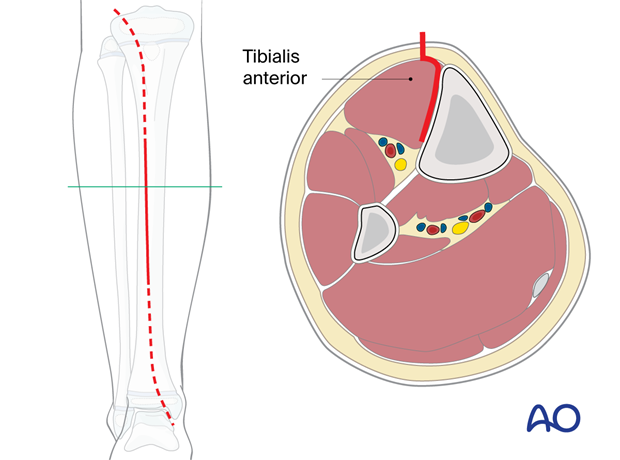
2. Anatomy
The triangular shape of the tibia
The lateral and posterior surfaces of the tibia are covered by muscle. The anteromedial surface has only a thin layer of subcutaneous tissue and skin. This surface provides less blood supply to the underlying bone.
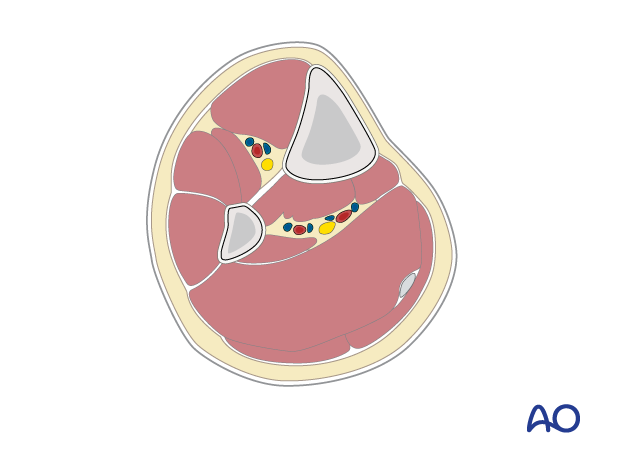
Compartments
The lower leg has four compartments.
The anterior compartment contains:
- Tibialis anterior
- Extensor hallucis longus
- Extensor digitorum longus
- Anterior tibial artery
- Deep peroneal nerve
The lateral compartment contains:
- Peroneus longus
- Peroneus brevis
- Superficial peroneal nerve
The deep posterior compartment contains:
- Tibialis posterior
- Flexor hallucis longus
- Flexor digitorum longus
- Peroneal artery
- Posterior tibial artery
- Tibial nerve
The superficial posterior compartment contains:
- Gastrocnemius
- Soleus
- Sural nerve
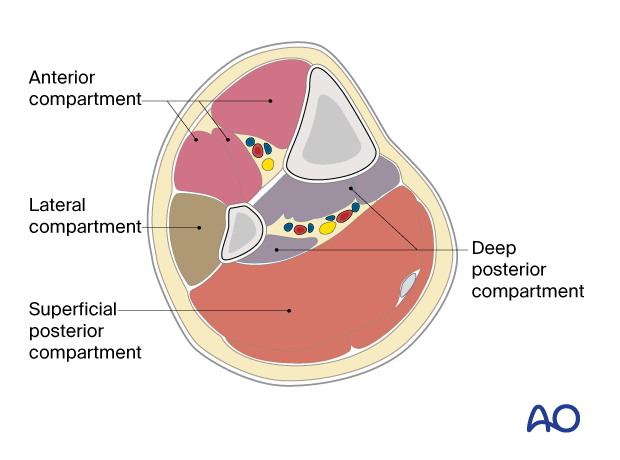
Proximal and distal tibial physes
The physis at each end of the tibia must be protected during surgical approaches and implant application.
The proximal tibial physis extends anteriorly and distally as an apophysis, which forms the tibial tuberosity.
This may be damaged as a consequence of injury and surgery, leading to tibial deformity.
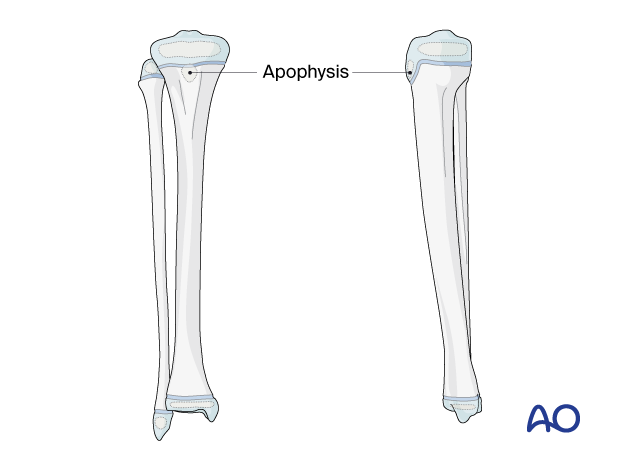
3. Skin incision
Identify the level of the physis with image intensification and mark this on the skin before making an incision.
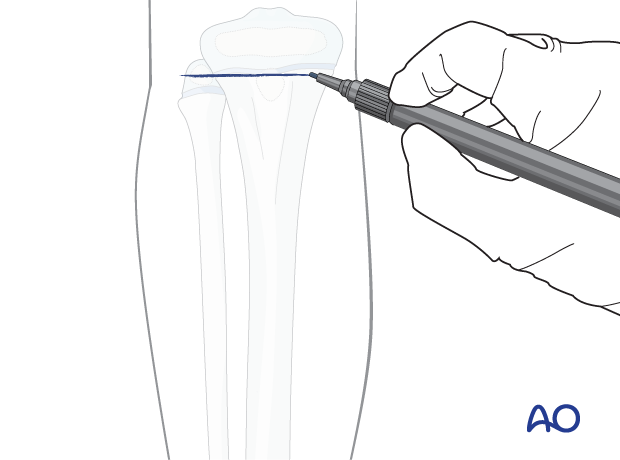
Approach the anterolateral surface through a longitudinal incision, 1–2 cm lateral to the tibial crest. Continue the incision distally, over the ankle joint along the line of the tibialis anterior tendon.
Periosteal stripping or compression should be avoided whenever possible.
The length of the incision depends on the planned plate length.
The distal extension of the anterolateral approach is helpful for distal tibial fractures but is obstructed by the muscles and neurovascular structures of the anterior compartment.

4. Dissection
Incise the fascia just lateral to the tibial crest and continue extraperiosteal dissection along the lateral surface of the tibia.
Leave the periosteum intact if possible.
It may be necessary to reflect periosteum from the fracture edges to achieve a direct anatomical reduction, but this should be done cautiously.
Make sure not to damage the perichondral ring at either physis.
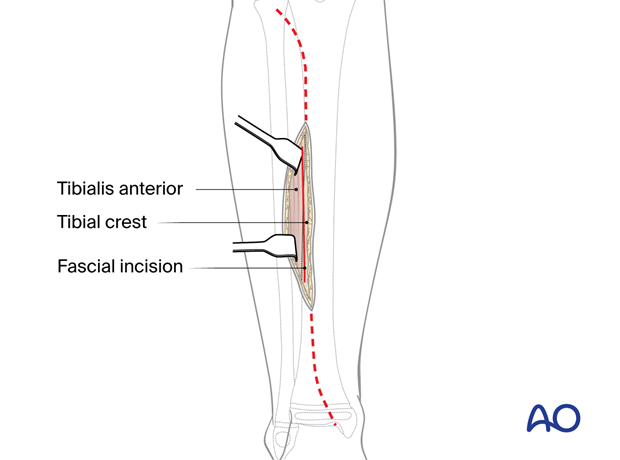
Retraction of the tibialis anterior should be limited to the anterolateral surface of the tibia required for reduction and fixation.
Near the junction of the middle and lower thirds of the tibia, the anterior tibial vessels and deep peroneal nerve come together and approach the lateral tibial surface and then pass obliquely anteriorly and distally around the tibia.
In the distal metaphyseal area, they lie on the periosteum, under the myotendinous portion of tibialis anterior, extensor hallucis longus, and extensor digitorum longus.
If this exposure extends into the distal third of the tibia, identify and protect the neurovascular bundle. This can be carefully mobilized from the tibial surface, along with the anterior compartment muscles.
This makes it possible to pass a plate on the anterolateral surface distally as far as the ankle joint.
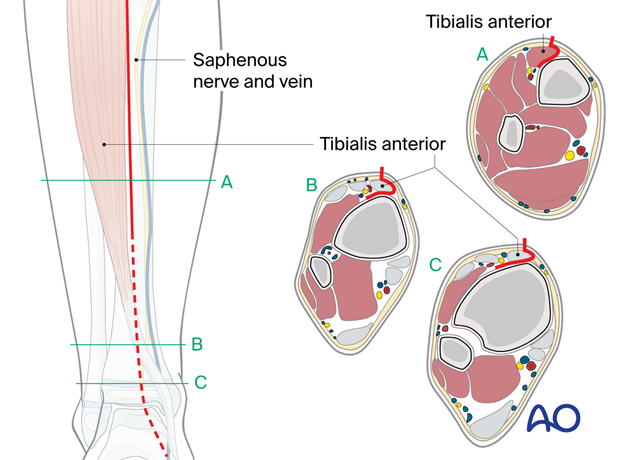
5. Wound closure
The skin and subcutaneous tissues are closed according to surgeon preference.
The fascia should be left open to minimize the risk of compartment syndrome.













